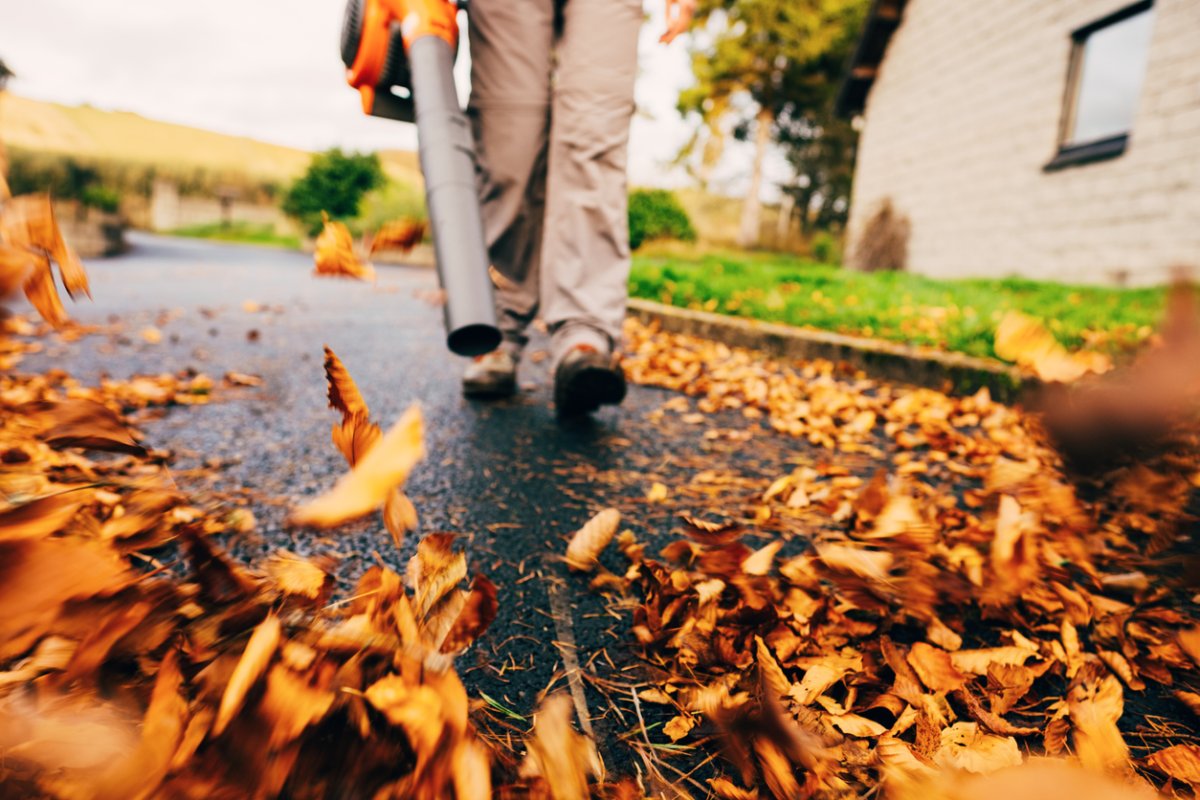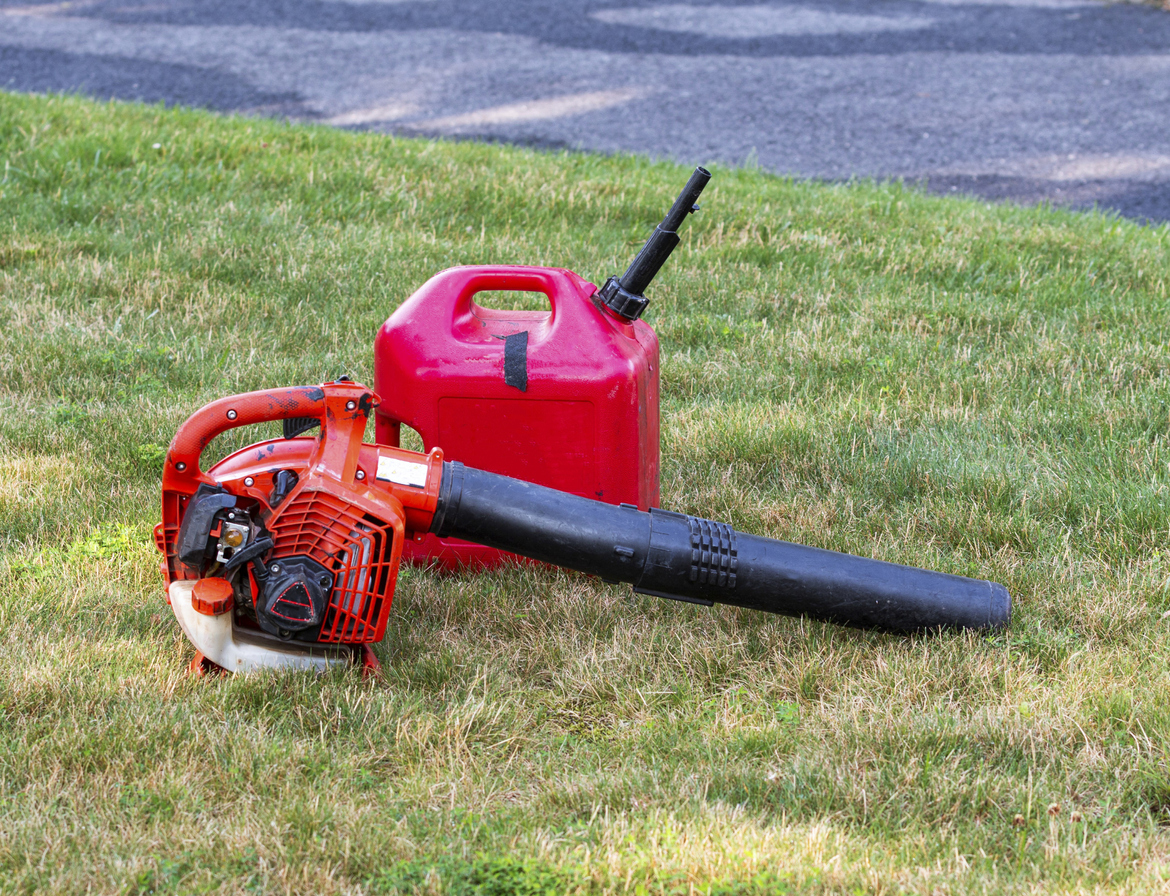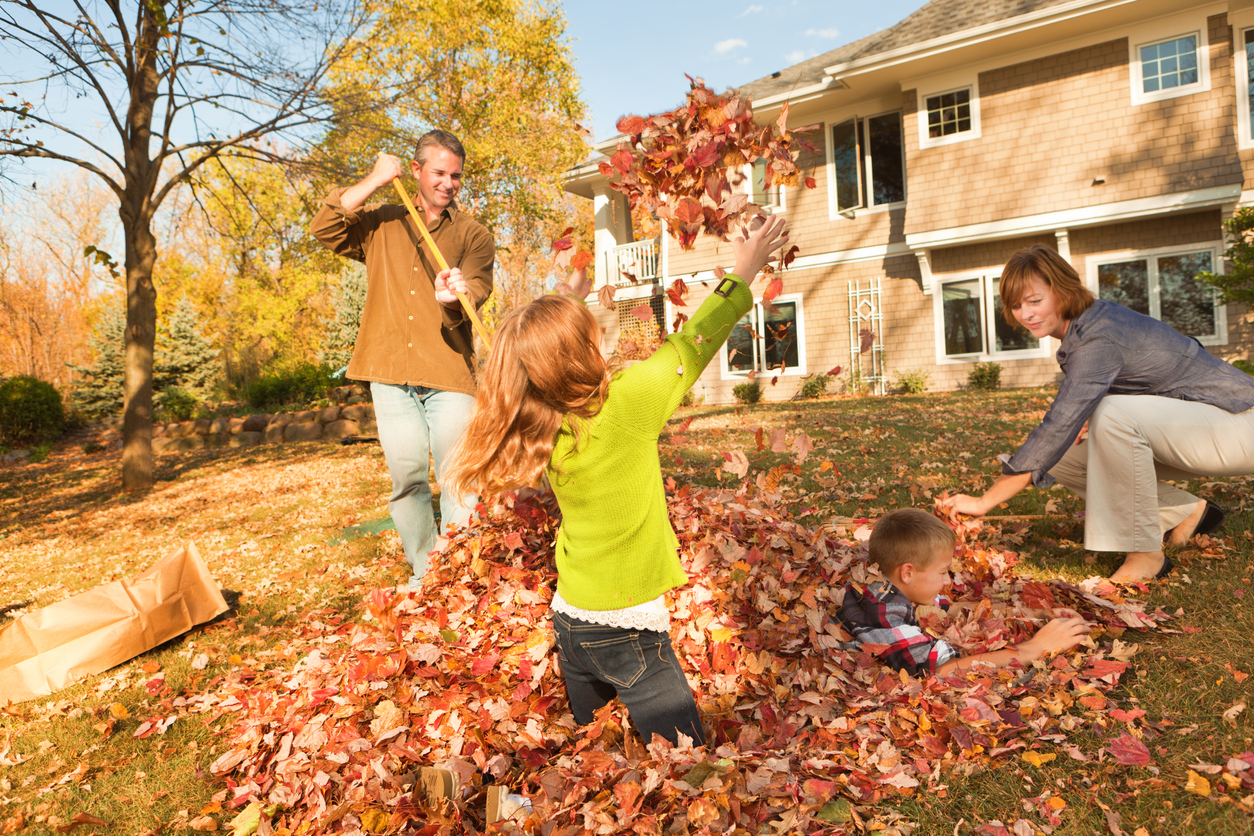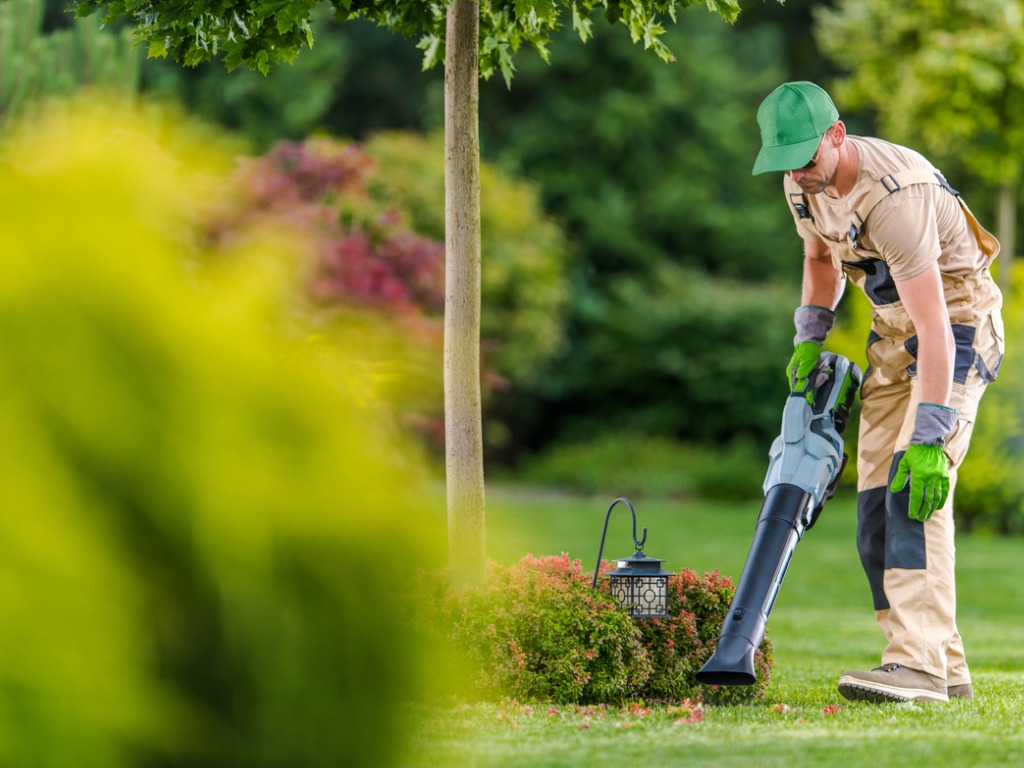

We may earn revenue from the products available on this page and participate in affiliate programs. Learn More ›
Leaf blowers have been around for decades. Today, there is the choice between battery-operated and gas-powered leaf blowers, but many landscaping companies and homeowners continue to use gas-powered versions to get the job done.
However, some people who have been affected by the noise and pollution have had enough. While a gas-powered blower’s two-stroke engine is efficient and reliable, the emissions and noise have led to communities around the nation restricting their use.

The Problems with Gas-Powered Leaf Blowers
Gas-powered leaf blowers have long been considered a nuisance of neighbors around the country. People complain about the noise, which can cause permanent hearing damage or other hearing issues such as tinnitus after just 2 hours of hearing a blower’s 65 to 80 decibels at 50 feet away. In densely settled communities, most people are usually much closer to leaf blowers than 50 feet.
“Noise is the problem that really drives our members crazy,” says Mike Christensen, spokesman for Quiet Clean NOVA, a grassroots citizens organization in Northern Virginia whose goal is to ban or restrict the use of gas-powered leaf blowers. “It’s what got most of them to become activists for the first time in their lives. But that’s partly because most people don’t have any idea how incredibly polluting the two-stroke engine leaf blowers are until they start researching the issue. Both problems are compelling.”
For those who live and work in the communities where gas-powered leaf blowing frequently happens, activists are trying to ban their existence, or at least limit their use, on account of their noise. But their impact on the environment isn’t exactly healthy, either.
“Gas-powered leaf blowers (GLBs) are amazingly polluting—much more polluting than most late-model cars. They burn a mixture of gasoline and oil. Because their two-stroke engines are so inefficient, more than 30 percent of that mixture is released unburnt as aerosol. These emissions contain an array of toxic pollutants, known carcinogens, and smog-forming chemicals,” says Christensen.
Almost 2.2 billion gallons of fuel are used on lawn care each year, which is the equivalent of powering millions of homes for a year. Gas-powered leaf blowers in particular have a negative effect on the environment because of their two-stroke engines. Research has shown these machines emit 23 times more carbon monoxide and nearly 300 times more non-methane hydrocarbons一toxic chemicals that contribute to ozone pollution一than a 2011 Ford F-150 SVT Raptor.

Communities All Over the Nation Support the Ban
Hundreds of municipalities, counties, and states are cracking down on the use of gas-powered leaf blowers, restricting the times these machines can be used, the seasons, and even outright banning them. These include the communities that have been most impacted by their noise, but some communities are concerned about air pollution and climate change, including many in California, partly because the state gets to set its own emissions standards.
However, towns across the nation are restricting or banning the use of gas-powered leaf blowers. As of 2021, more than 100 cities in the United States have restricted or banned the use of gas-powered leaf blowers.
Why Some Landscapers and Homeowners Continue to Use Gas-Powered Leaf Blowers
Gas-powered leaf blowers are popular among landscaping professionals and homeowners. The pros say that electric leaf blowers don’t work as well as gas-powered ones, which means reduced efficiency for landscapers. In addition, landscaping companies say they often don’t have enough employees to meet demand, and one worker with a gas-powered leaf blower is worth two with manual tools.
Some homeowners also like gas-powered leaf blowers because they say gas-powered leaf blowers get the job done better because they have more power (measured in cubic feet per minute). Battery-powered versions put out about 500 CFM and gas-powered versions put out 1,200 CFM or more. Plus, gas leaf blowers aren’t limited by a cord or battery power.

What to Do Instead of Blowing Leaves
There are several alternatives to blowing that both homeowners and landscapers can do to move leaves. From shredding and composting to raking, here are a few options.
- Shred leaves with an electric leaf mulcher, which emits noise of around 60 decibels.
- Rake leaves the old-fashioned way, which can be a fun healthy activity for kids and for adults.
- Use shredded leaves to mulch flower beds, provide protective coatings for plants and roots over the winter, and even help with weed control.
- Compost leaves to create a healthy compost mixture in a compost bin.
- Use shredded leaves to improve soil, especially soil that tends to be sandy, dry, or contain too much clay.
- Make leaf mold by letting leaves decompose into leaf mold, which is rich in calcium and magnesium that’s helpful for plants.
- Keep a layer of leaves as nutrients for a lawn. While a thick layer can suffocate grass, a thin layer can actually be beneficial for grass.
How to Use Electric and Gas-Powered Blowers Responsibly
Many municipalities that haven’t banned gas-powered leaf blowers are restricting their use. Nearly 20 cities in California; Brookline, Massachusetts; The Township of Montclair in New Jersey; more than 10 cities in New York; and Portland, Oregon have banned their use.
The restrictions provide ways you can use battery-operated and gas-powered leaf blowers more responsibly, with both sustainability and community in mind. Here are some suggestions for responsible electric and gas-powered leaf blower use.
- Always abide by your local ordinances for both gas-powered and electric leaf blower use.
- Bystanders and animals should be at least 50 feet away when you’re using a leaf blower. If anyone gets closer, stop blowing.
- Avoid leaf blowing after dark.
- If you can, wait to begin leaf blowing until after 8 a.m. on the weekdays, and after 10 a.m. on weekends.
- Only blow the leaves when they’re dry, which will minimize the use of the leaf blower.
- It’s best to work on a day when winds are calm, but if you can’t do this, then try to work on a day when the wind is blowing in the right direction for your particular job.

Final Thoughts
Given the environmental impact of gas-powered leaf blowers, the hearing damage they can cause, and their nuisance in neighborhoods all over the nation, it’s understandable that municipalities are demanding these machines become a thing of the past. Fortunately, there are plenty of electric leaf blowers available to get the job done if you still want to blow your leaves.
